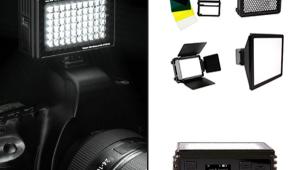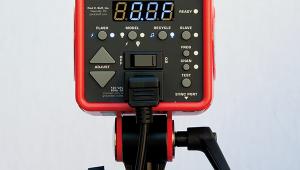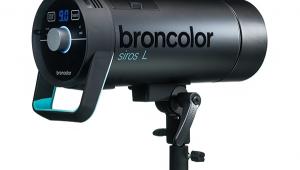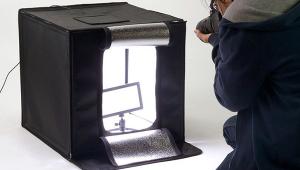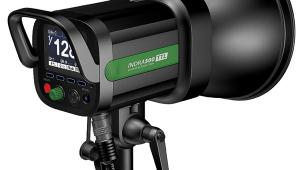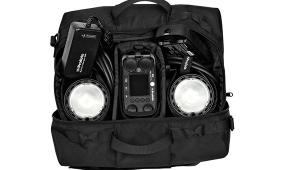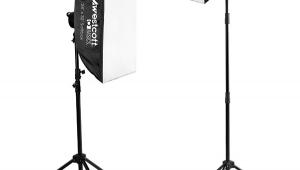RadioPoppers: No Wires, Few Limitations
One of the biggest advancements in recent years in flash photography has been the ability to use your camera-compatible flash off-camera and wirelessly. Canon, Nikon, and others have developed their own systems where you can control multiple units that not only fire at the same time but also can be put into groups with their own settings.
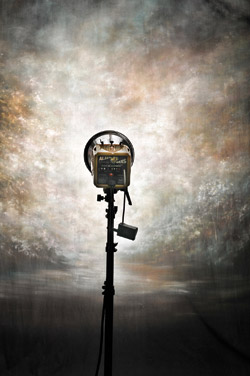
While that’s all good and it works really well, the Achilles heel in the system has always been the infrared system that relies on line of sight and is only good for about 30 feet. Want to hide a light behind someone to light up their hair? Sorry, that’s a no-go. How about putting a flash in back of that wall to light the area in back? Too bad, you’re out of luck.


That’s where RadioPopper comes in. They’ve developed a couple of different systems. Their PX System gives you wireless control of your dedicated flash units. That means you can fire a flash from up to 1500 feet. It also means that your flash will retain all its functionality, allowing you to use manual, E-TTL, i-TTL, and high-speed flash, just as if your flash was mounted on the camera. It does this by converting the magnetic pulses from the Commander unit on your camera, sending the radio command to the PX Receiver on the remote flash, and converting the radio signal into infrared and feeding that to the flash. Sounds complicated, but all I need to know is how well it works and how easy things are from my end.

All Photos © Steve Bedell
Then there is the JrX System. Unlike the PX System, the JrX System is more general purpose, meaning that it will allow you to trigger almost any studio strobe or speedlight. The catch, if you want to call it that, is that you lose any TTL functions and have to use your dedicated flash in Manual mode only. It makes up for that by being extremely versatile and even allowing you to control power output from the transmitter on certain flash units, such as White Lightning and AlienBees studio units and my Nikon SB-800.
There is of course a price to be paid for all this sophistication. The JrX System will set you back about $160 for a transmitter and receiver while the PX set runs about $500.

Let’s look at the PX System first. The first thing you should do is read the manual. Oops, it doesn’t ship with one! You can easily download and even print the manual in PDF form from the website, or, even better, watch the videos that explain just how to set up and work with the units. The PX System has two units—a transmitter and a receiver. The transmitter is made to either sit on top of the master flash unit via touch fasteners or perch above the pop-up flash on the supplied Nikon adapter when using a Nikon camera and the pop-up flash is being used in Commander mode.
Next, slide your flash unit into the supplied cradle that holds it plus the PX Receiver. There are a couple of important first steps, though. To begin with, make sure your camera is set to work with your wireless flash system, which means the Creative Lighting System for Nikon. Only after testing that everything is in order first should you hook up the RadioPoppers. That way you’ll know where any problem lies if the flash is not firing. Remember, the “poppers” work within the manufacturers’ technology; they convert a radio signal to IR, so it’s always a good idea to make sure all is well before adding another layer of complexity.

You’ll note in the cradle that the shoe mount on your flash has several slots in which it can be used. Different units go in different slots. I didn’t notice it at first, but in really tiny letters I found it had SB-800 written on the bottom. Doing that lines up the little hole in the foam that can “see through” to your camera’s IR sensor. The foam blocks the camera sensor while at the same time allowing a pathway for the signal from the receiver.
Your next step is to push the “P” button on the transmitter and receiver to turn them both on, then fire away! Except, when I did that, nothing happened! I strongly urge you to watch the videos on the RadioPopper website before shooting. If you have one setting on the transmitter that doesn’t jibe with the receiver, darkness results. In my case, the units will work with both Nikon and Canon cameras and flashes and some others, but they ship set up for Canon, so I needed to switch to Nikon via the menus in the “poppers.”
I used the PX System in bright light and at long distances, both the kiss of death for infrared systems, and they fired every time. How about flash functions such as TTL? Again, they worked as they should. Just keep in mind that the job of the poppers is to get the signal to the unit. They do not take control over your flash or use its own system as some competing units do.

I then moved on to the JrX System. At first, I thought, how am I going to do any kind of report on the JrX System? After all, they are just like any other radio trigger I’ve all been using for years. You put a transmitter on the camera, a receiver on the flash unit, and it fires. Not much to write about or review there!
I was wrong. The JrX System can do some very cool tricks. Sure, it will fire your studio flash when properly connected. But hook it up to a White Lightning or AlienBees (sorry, Einstein won’t work!) unit and you can control the power output by means of those rubber fingers sticking out the side of the transmitter. And that’s not all. Use the JrX units with your Nikon or Canon flash via the optional RPCube and you can adjust the power of that unit from the flash as well.
This opens up a whole new world of possibilities, and some of the most fun and sophisticated images I got were done by shooting outside with a combination of a Calumet B300 flash and a Nikon SB-800. I like being able to control things manually anyway, and this setup allowed me to do that plus mix my portable and studio lighting anyplace I desired. Using a JrX Transmitter and two receivers plus the “cube” let me do all that for about $280, where a PX System for two dedicated units would be about $750. You lose some sophistication but gain a little versatility; it’s up to you to decide which one better suits your needs.
For more information, contact RadioPopper at: www.radiopopper.com.
Steve Bedell has been a portrait photographer for over 25 years. To subscribe to EPhoto, a free e-mail newsletter with tips for photographers, contact Bedell via e-mail at: sb@stevebedell.com. Also ask about his lighting DVDs.
- Log in or register to post comments


